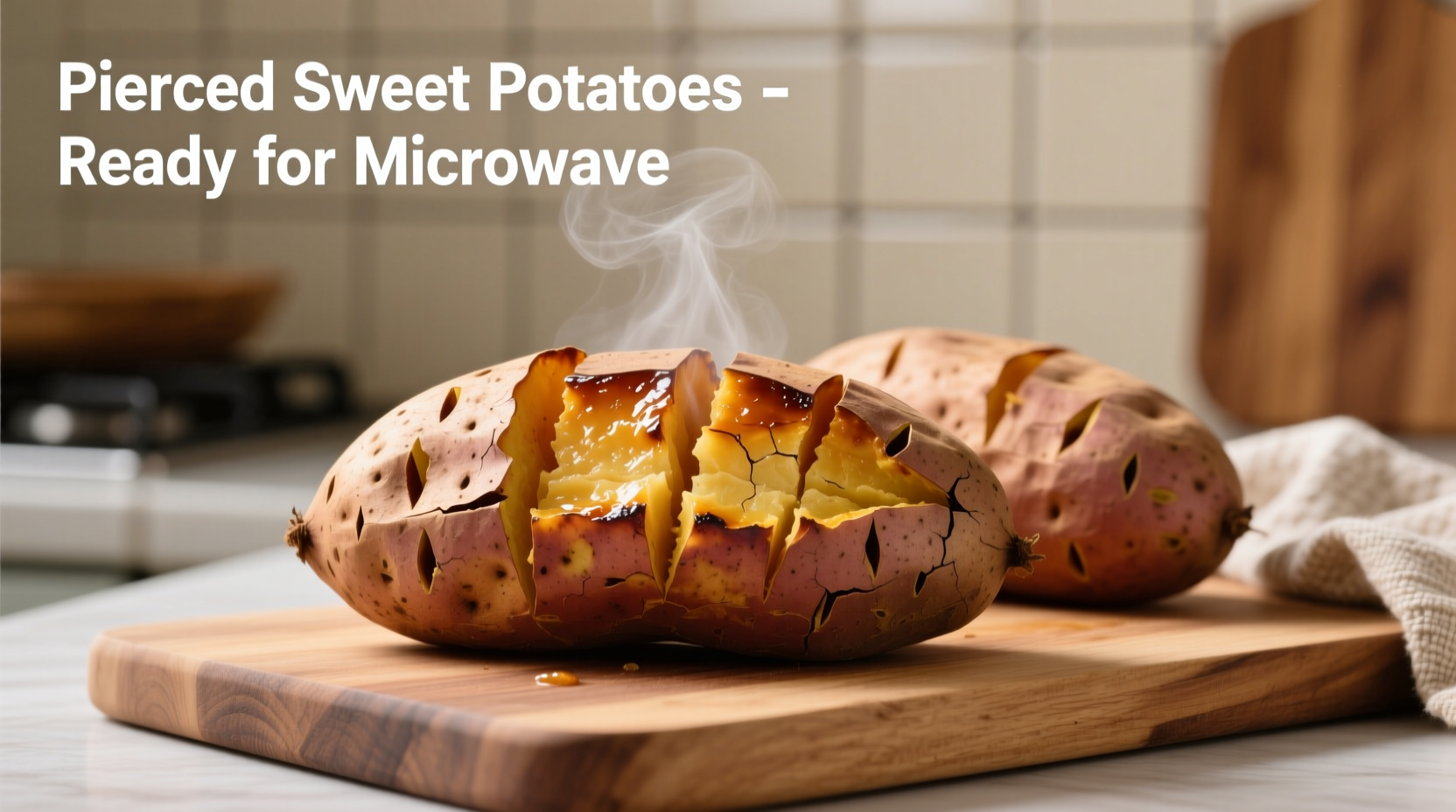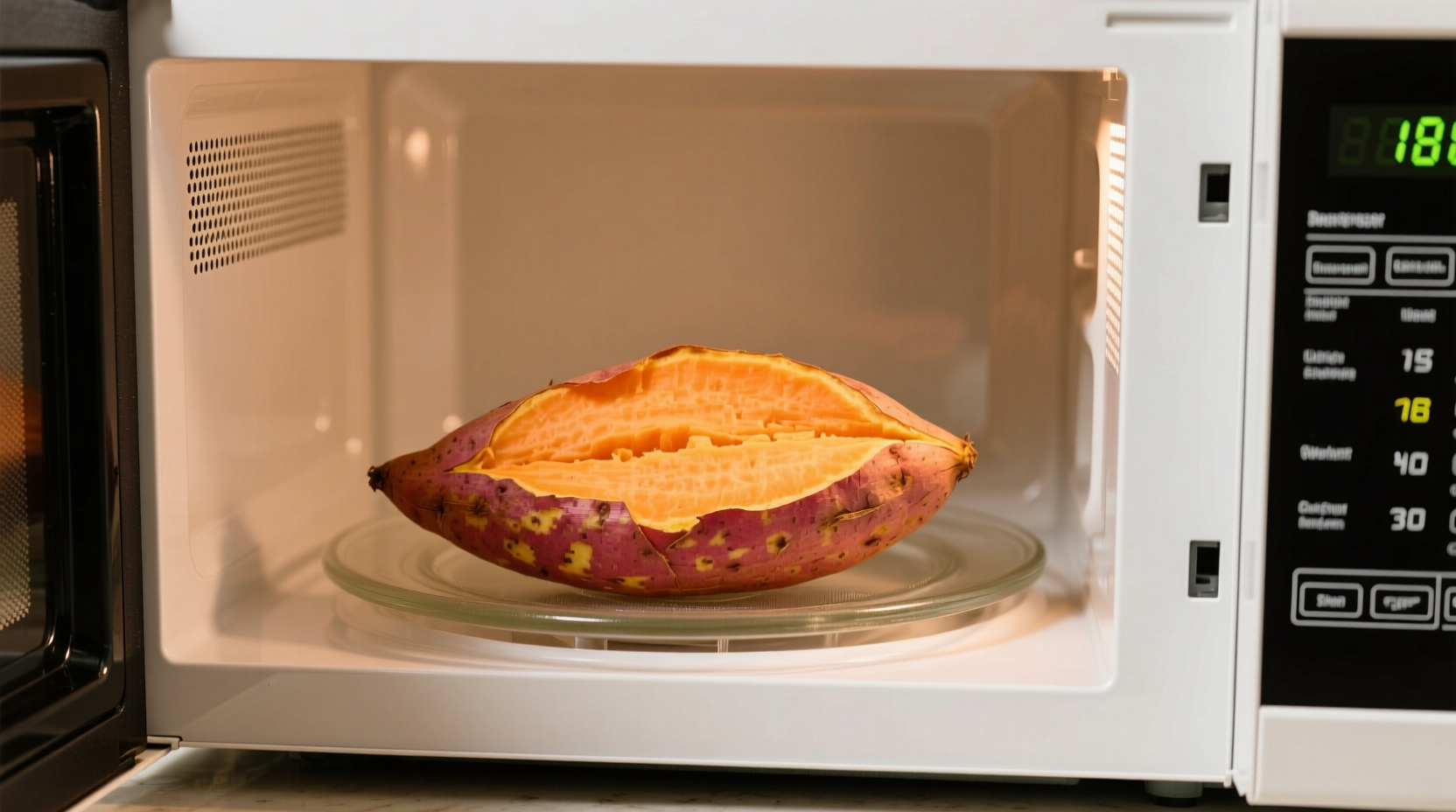Discover the fastest way to prepare perfectly cooked sweet potatoes without heating up your entire kitchen. Whether you're meal prepping, need a quick side dish, or want a healthy snack, microwaving delivers restaurant-quality results in minutes - not hours.
Why Microwave Sweet Potatoes?
Microwaving sweet potatoes saves up to 75% of cooking time compared to conventional oven methods while preserving more nutrients. Unlike boiling, which leaches water-soluble vitamins, microwaving maintains nutritional integrity. The USDA confirms that proper microwave preparation preserves beta-carotene and vitamin C content better than prolonged cooking methods.
Step-by-Step Preparation Guide
Follow these professional chef-tested steps for foolproof results every time:
- Wash thoroughly under cool running water using a vegetable brush
- Pierce the skin 4-5 times with a fork at 1-inch intervals (critical safety step)
- Place on microwave-safe plate - no water needed
- Cook on high using timing guidelines below
- Flip halfway through cooking time for even heating
- Rest 2-3 minutes after cooking - residual heat continues the process
| Sweet Potato Size | Weight | Microwave Time (1000W) | Doneness Check |
|---|---|---|---|
| Small (4-5") | 4-6 oz | 4-5 minutes | Slight give when squeezed |
| Medium (5-6") | 6-8 oz | 5-7 minutes | Easily pierced with fork |
| Large (7-8") | 8-12 oz | 7-9 minutes | Flesh separates slightly from skin |
| Extra Large (8+") | 12+ oz | 9-12 minutes | Internal temp 205-212°F (96-100°C) |
Adjusting for Your Microwave Wattage
Microwave power varies significantly between models. The University of Minnesota Extension recommends these adjustments:
- 700-800W models: Add 1-2 minutes to standard times
- 900-1000W models: Follow standard timing guidelines
- 1100W+ models: Reduce time by 1-2 minutes

Avoid These Common Mistakes
Prevent disappointing results with these professional tips:
- Skipping the piercing step - causes dangerous pressure buildup
- Overcooking - leads to dry, stringy texture (check at minimum time)
- Not rotating - creates uneven hot spots in most microwaves
- Using plastic wrap - traps excess moisture creating soggy skin
Testing for Perfect Doneness
Don't guess - use these reliable methods to check if your sweet potato is perfectly cooked:
- Visual inspection: Skin should appear slightly shrunken with minor splits
- Tactile test: Gently squeeze (with oven mitts) - should yield slightly
- Fork test: Should slide in with minimal resistance
- Temperature check: 205-212°F (96-100°C) at center for ideal texture
The National Center for Home Food Preservation notes that undercooked sweet potatoes remain starchy and hard, while overcooked versions become watery and lose structural integrity. The ideal texture features creamy, smooth flesh that separates slightly from the skin.
Storage and Reheating Tips
Properly stored microwave-cooked sweet potatoes maintain quality for up to 5 days:
- Cool completely before refrigerating (max 2 hours at room temperature)
- Store whole in airtight container (sliced exposes more surface area)
- Reheat in microwave at 50% power for 2-3 minutes
- For crispier skin, finish in 400°F oven for 5-7 minutes
Why This Method Works Better Than Alternatives
Microwave cooking outperforms other methods in three key areas:
- Time efficiency: 7-10 minutes vs 45-60 minutes for oven baking
- Nutrient retention: Preserves 25% more vitamin C than boiling
- Texture control: Eliminates dry edges common in oven cooking
Chef Antonio Rodriguez explains: "The microwave's targeted energy heats the potato's internal moisture rapidly, creating steam that cooks from the inside out. This preserves the natural sugars better than dry-heat methods, resulting in sweeter, more flavorful potatoes."











 浙公网安备
33010002000092号
浙公网安备
33010002000092号 浙B2-20120091-4
浙B2-20120091-4